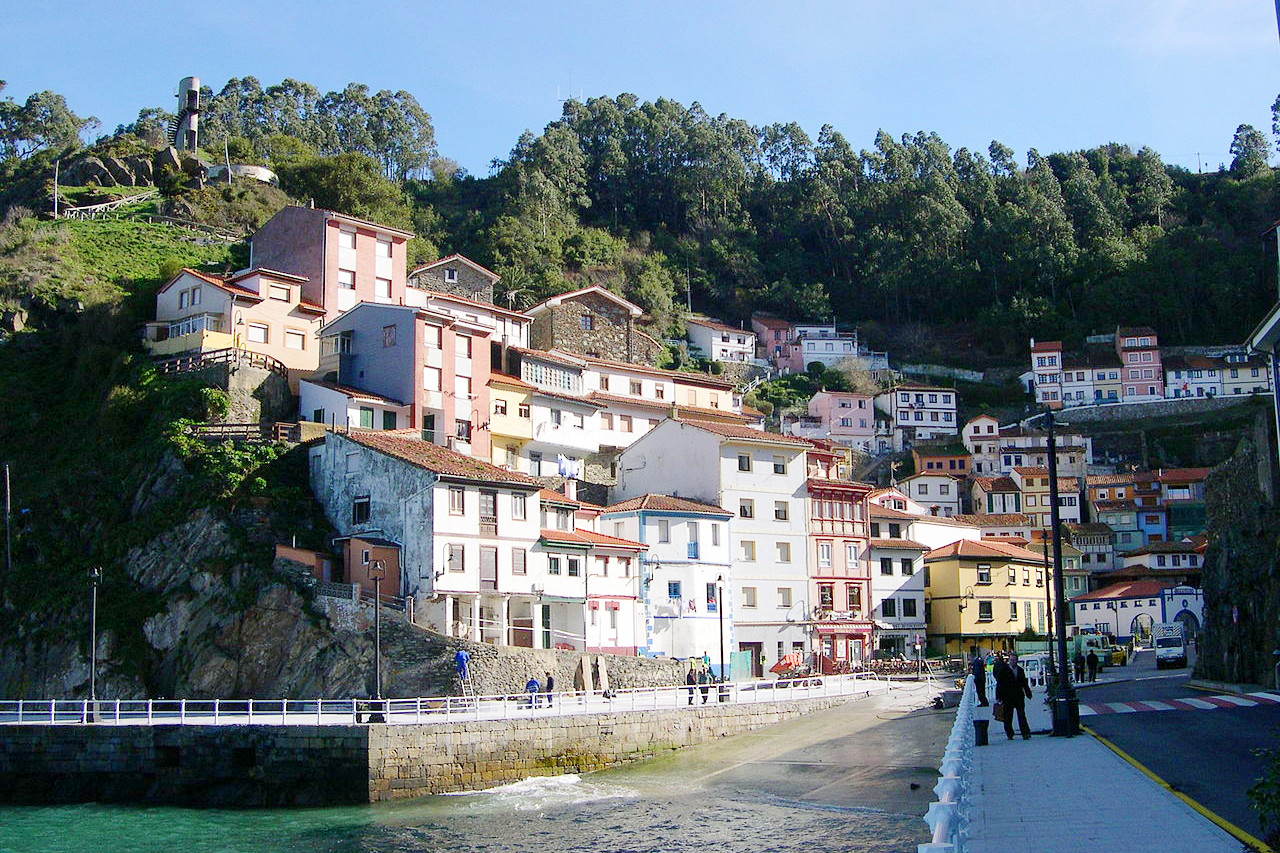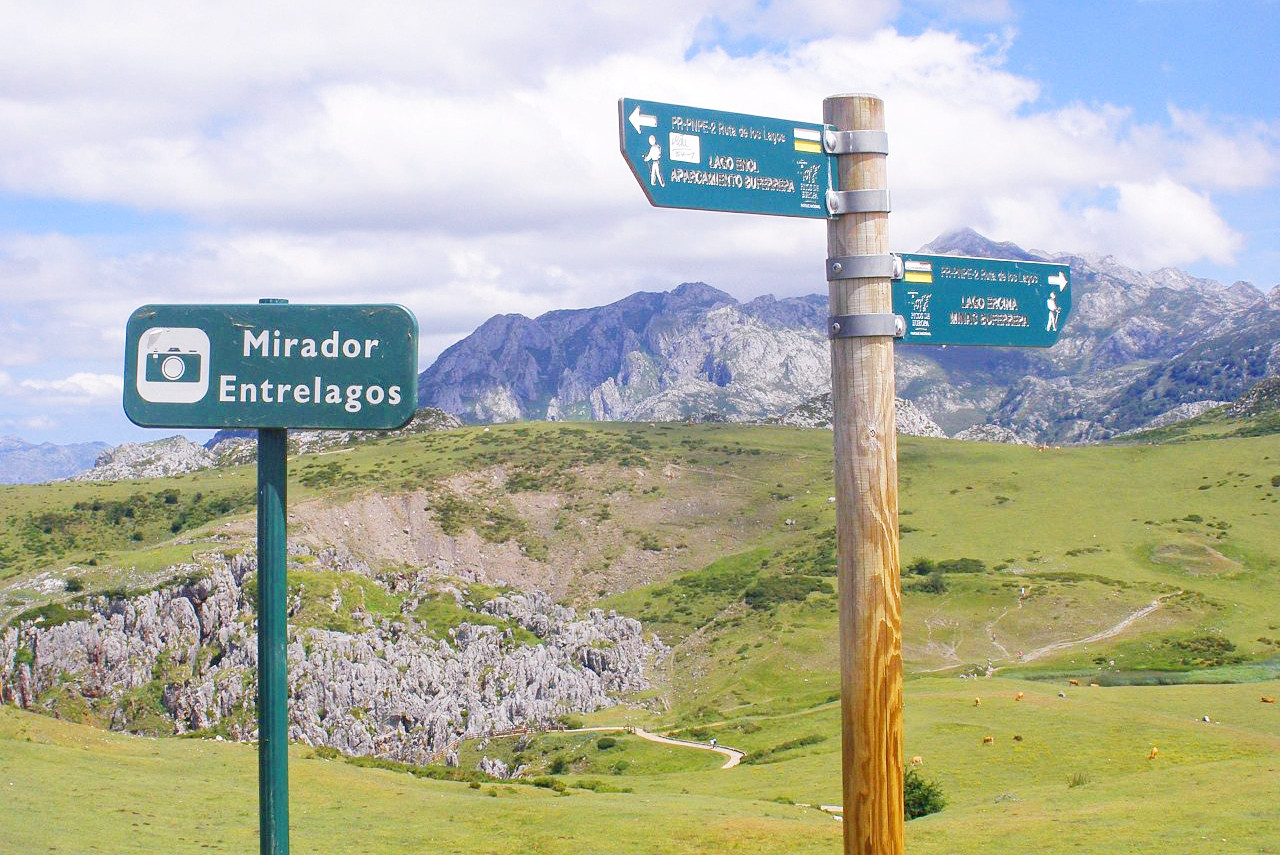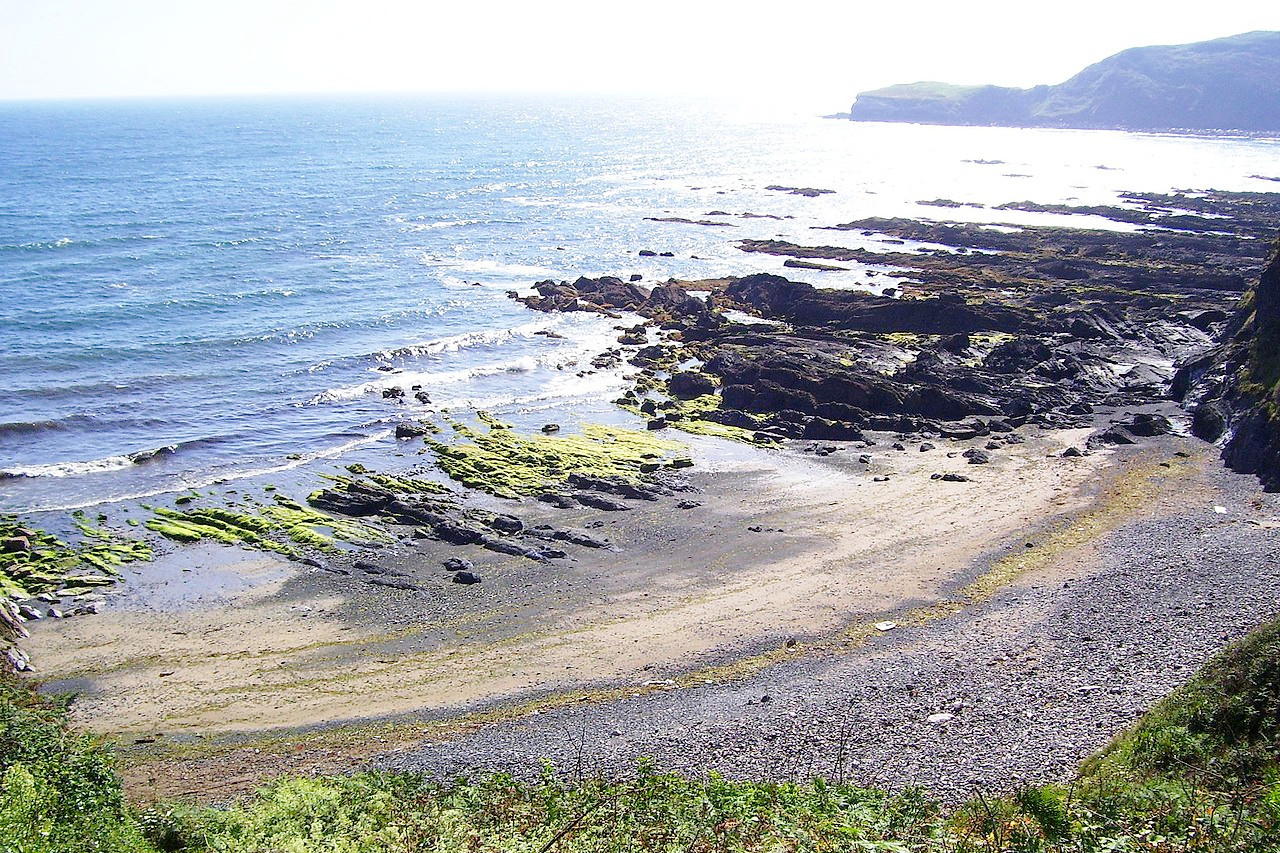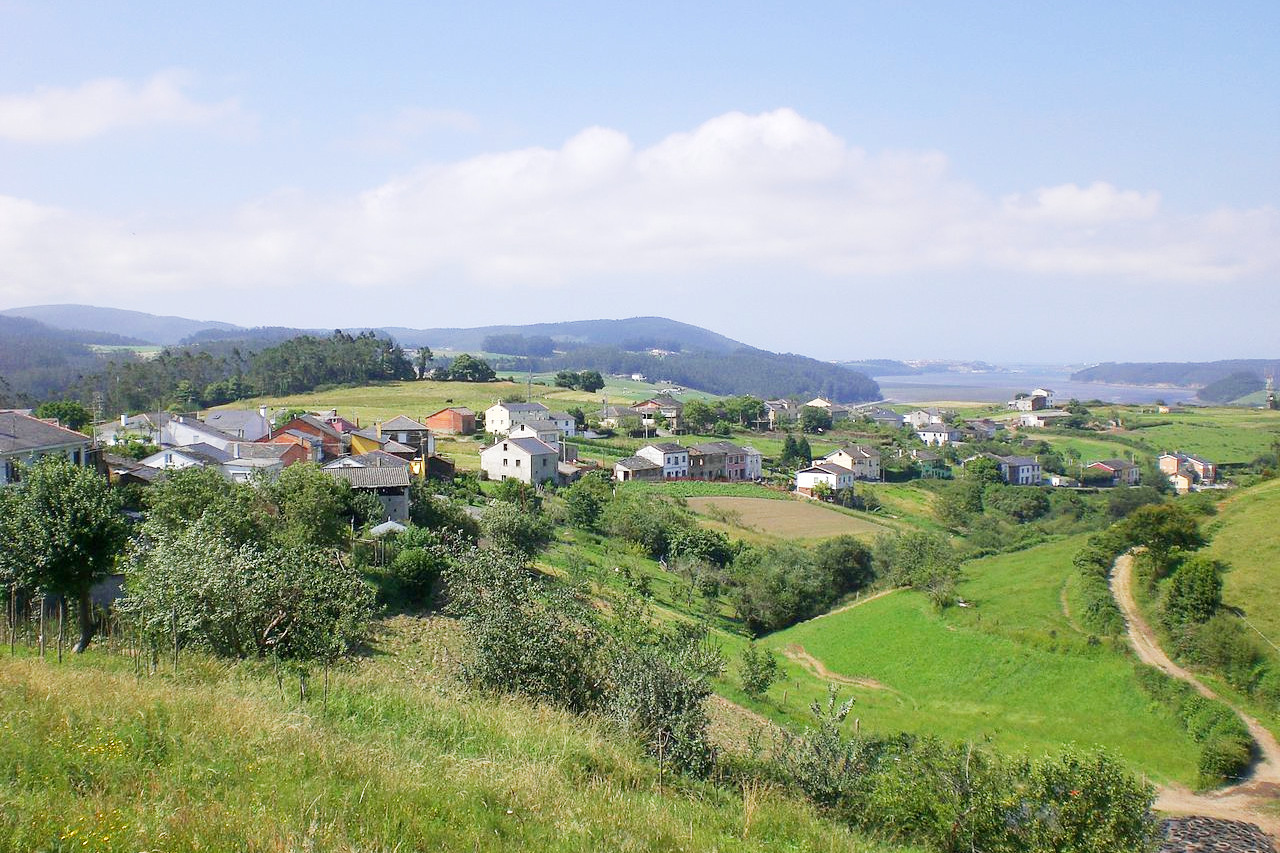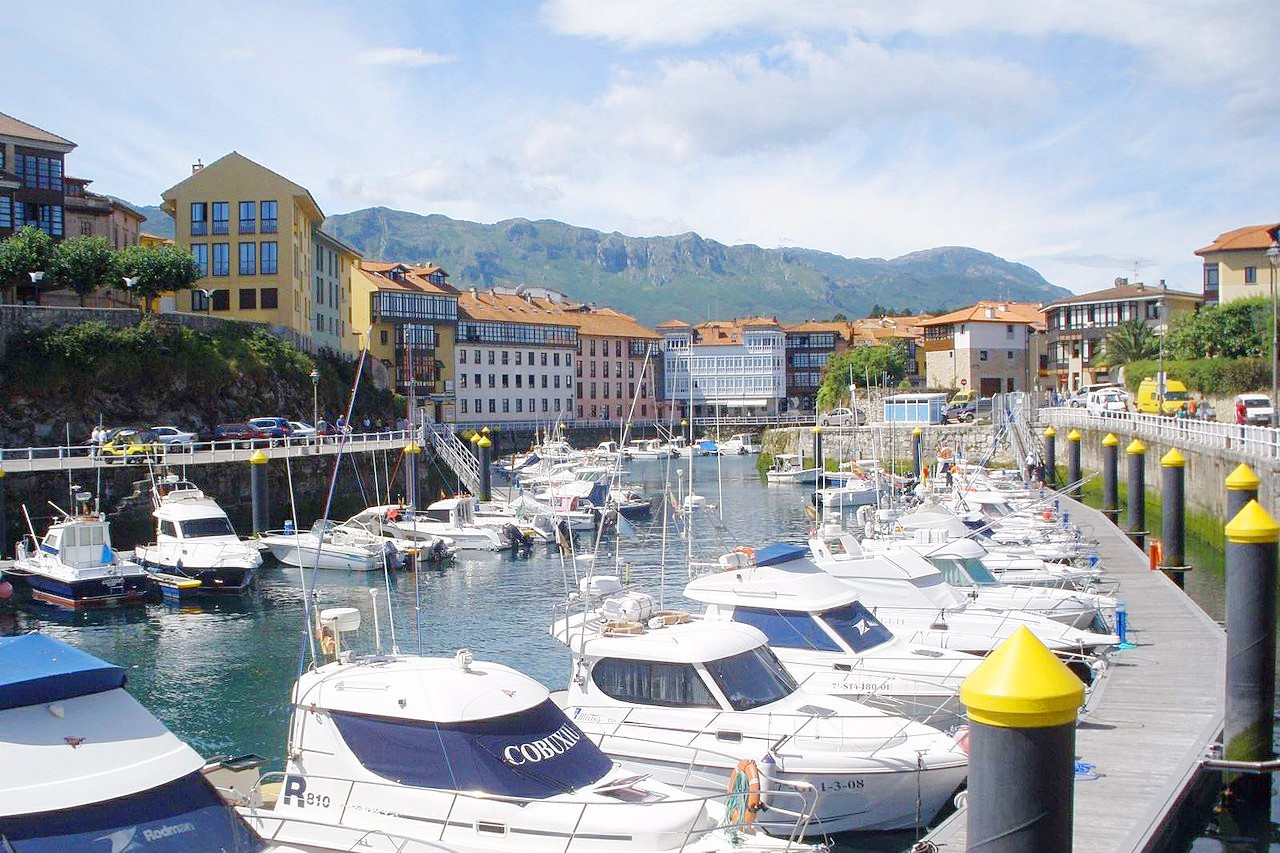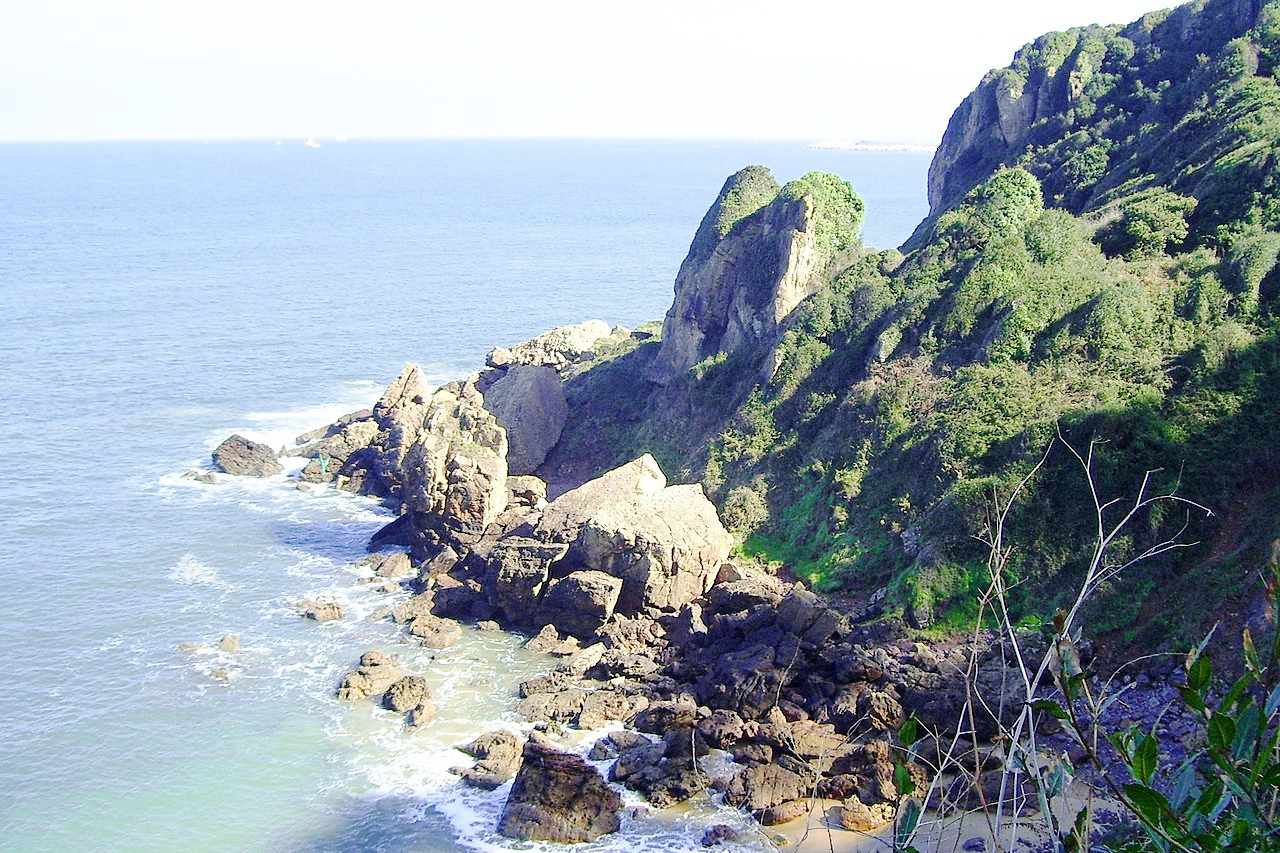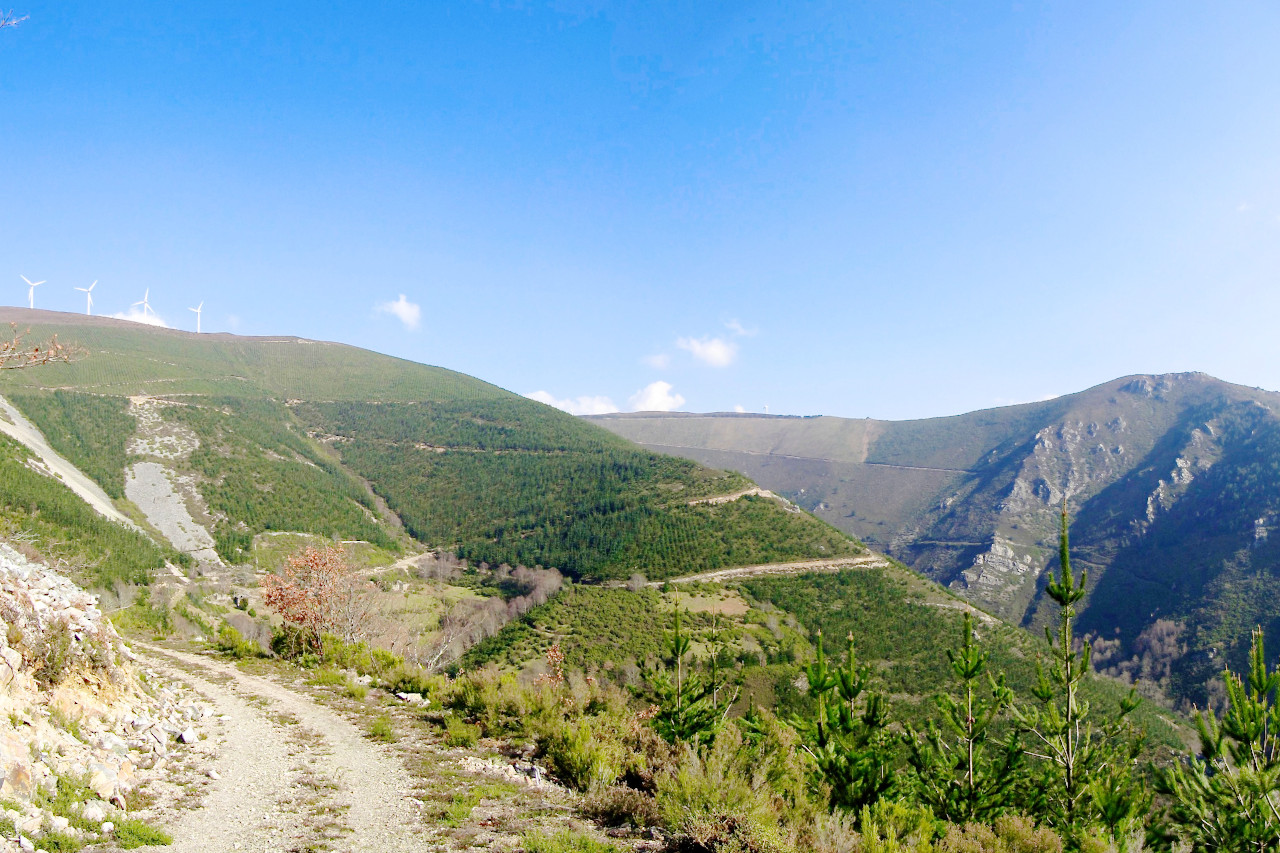The Geography of
Asturias
Why visit Asturias?
The Asturias are part of the northern slope of the Cantabrian Mountains, and the whole region is one of the wildest and most picturesque parts of Spain. The mountainous districts abound in like rocks and ravines, foaming torrents gushing from the summits into yawning precipices, and forests of oaks and beech-trees.
Contents
Map
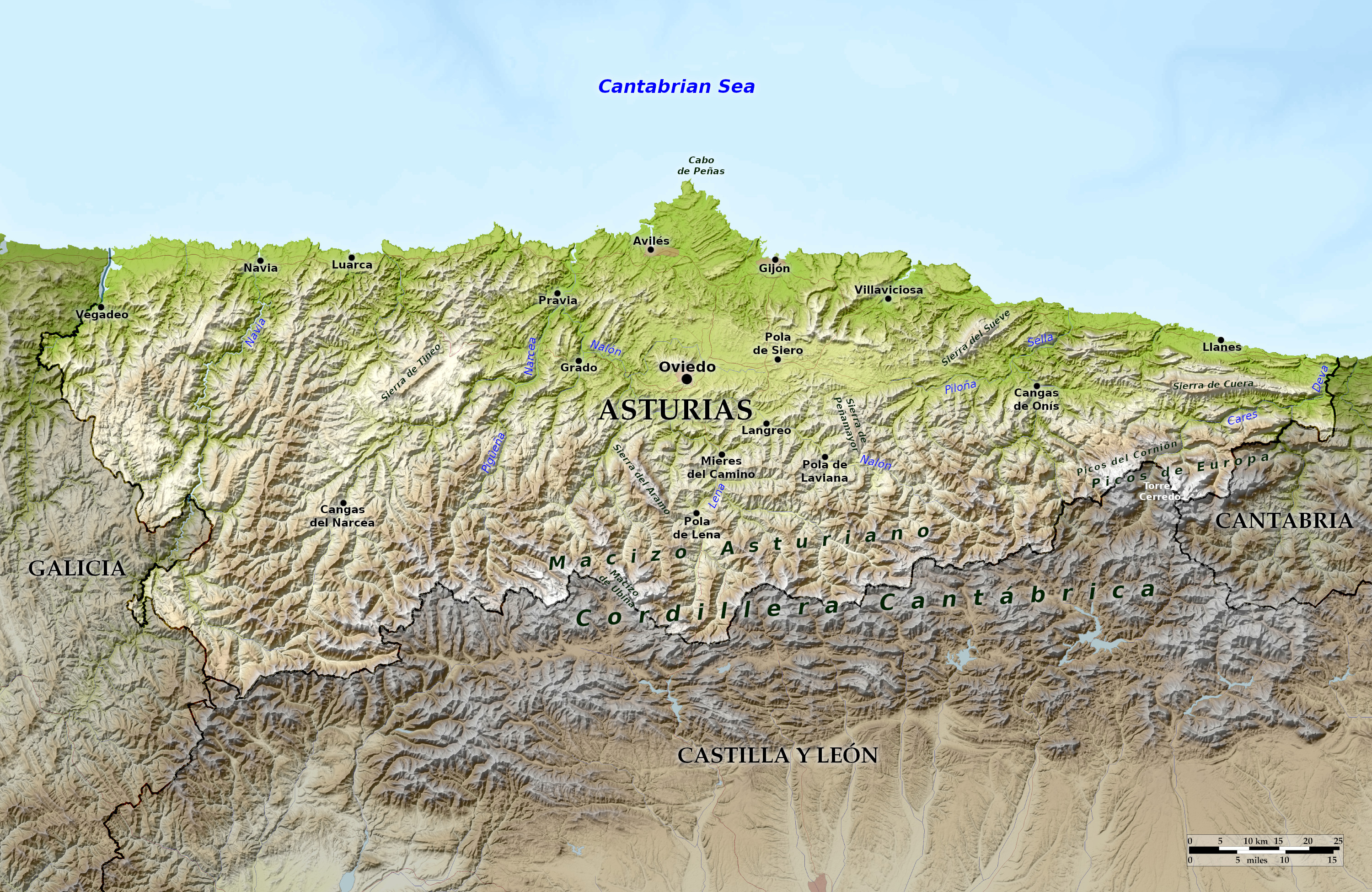 Relief map of Asturias
Relief map of Asturias
What is the landscape of Asturias like?
Asturias with its wild countryside is part of the northern slope of the Cantabrian Mountains. It is the most mountainous of the Spanish autonomous communities and one of the most mountainous regions in Europe. The higher summits, which often reach a height of 2,000–2,500 meters (7,000–8,000 feet), are usually covered with snow until July or August, and the whole region is one of the wildest and most beautiful parts of Spain.
The Asturian coastline has hundreds of beaches, coves, and natural sea caves, and is known for rugged coastal cliffs. A narrow strip of level moorland, covered with furze, stretches inland from the cliffs to the foot of the mountains. The province has many rivers and waterfalls which have hollowed out deep valleys.
What is the nature of Asturias like?
The countryside of Asturias is rugged, and rich in forests. The most common trees are oaks and beeches, which create mixed forests. Also abundant are walnut, ash, and introduced species such as Monterey pine, white eucalyptus and American oak. At the highest altitudes, the environment is subalpine with low shrubs (such as dwarf juniper and heathers), grasses, and peat bogs.
What is the climate of Asturias like?
The general climate in Asturias is a maritime one, with abundant rainfall spread throughout the year and mild temperatures in both winter and summer. Rainfall reaches a maximum in winter and a minimum in summer; and the coasts are the driest parts of the region; levels of rainfall increasing markedly as one ascends into the mountains. Winter frosts are rare on the coast, but in the higher regions the winters are protracted and there is heavy snow.
| Climate data for Oviedo (1981–2010) | |||||||||||||
|---|---|---|---|---|---|---|---|---|---|---|---|---|---|
| Month | Jan | Feb | Mar | Apr | May | Jun | Jul | Aug | Sep | Oct | Nov | Dec | Year |
| Average high °C (°F) | 12.0 (53.6) | 12.7 (54.9) | 14.9 (58.8) | 15.7 (60.3) | 18.2 (64.8) | 20.9 (69.6) | 22.8 (73.0) | 23.3 (73.9) | 22.1 (71.8) | 18.7 (65.7) | 14.6 (58.3) | 12.4 (54.3) | 17.4 (63.3) |
| Daily mean °C (°F) | 8.3 (46.9) | 8.7 (47.7) | 10.5 (50.9) | 11.3 (52.3) | 13.9 (57.0) | 16.7 (62.1) | 18.7 (65.7) | 19.1 (66.4) | 17.6 (63.7) | 14.6 (58.3) | 10.9 (51.6) | 8.9 (48.0) | 13.3 (55.9) |
| Average low °C (°F) | 4.6 (40.3) | 4.7 (40.5) | 6.1 (43.0) | 6.8 (44.2) | 9.5 (49.1) | 12.4 (54.3) | 14.5 (58.1) | 14.8 (58.6) | 13.1 (55.6) | 10.4 (50.7) | 7.2 (45.0) | 5.3 (41.5) | 9.1 (48.4) |
| Average precipitation mm (inches) | 84 (3.3) | 81 (3.2) | 78 (3.1) | 100 (3.9) | 82 (3.2) | 57 (2.2) | 45 (1.8) | 56 (2.2) | 66 (2.6) | 99 (3.9) | 115 (4.5) | 99 (3.9) | 962 (37.8) |
| Source: Agencia Estatal de Meteorología | |||||||||||||
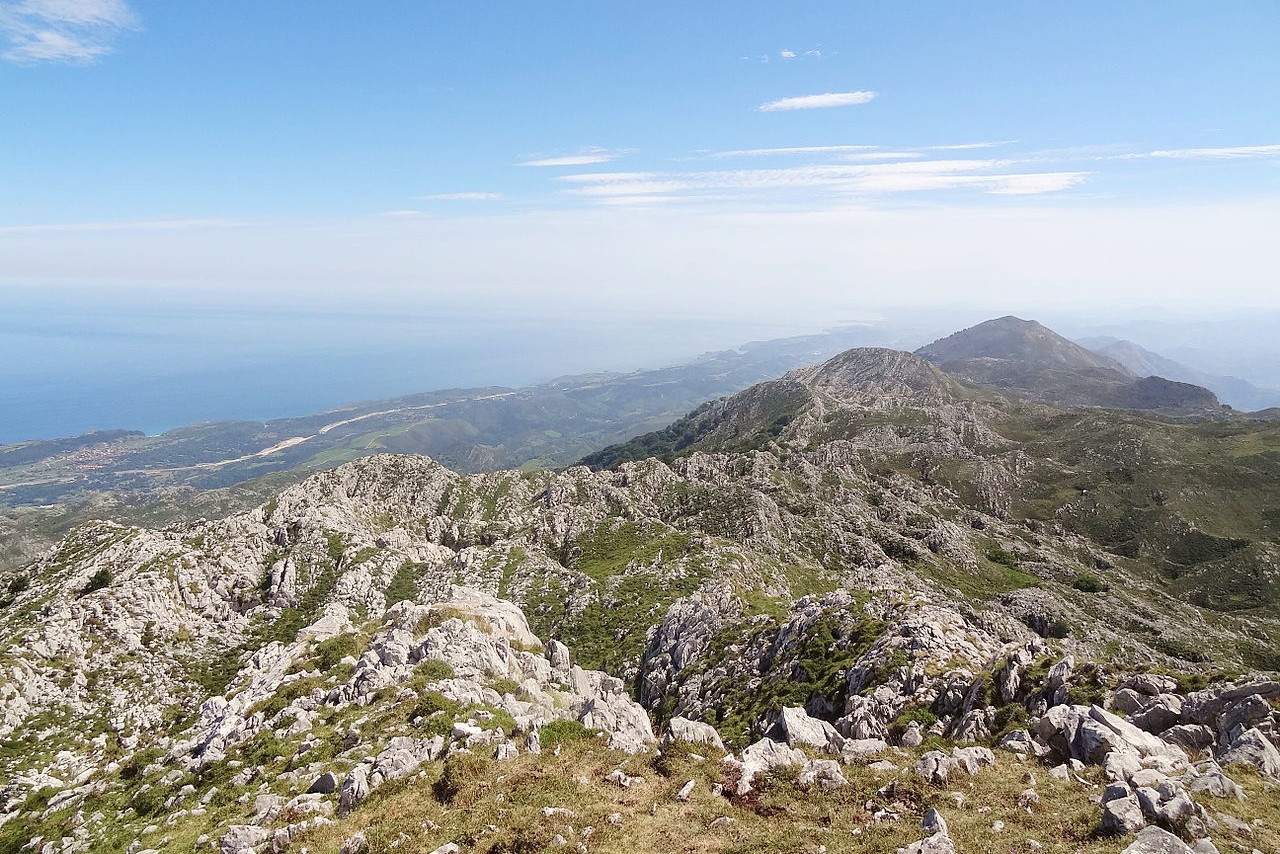 View from the top of Pico Turbina, Sierra del Cuera
View from the top of Pico Turbina, Sierra del Cuera
The official websites
Asturias
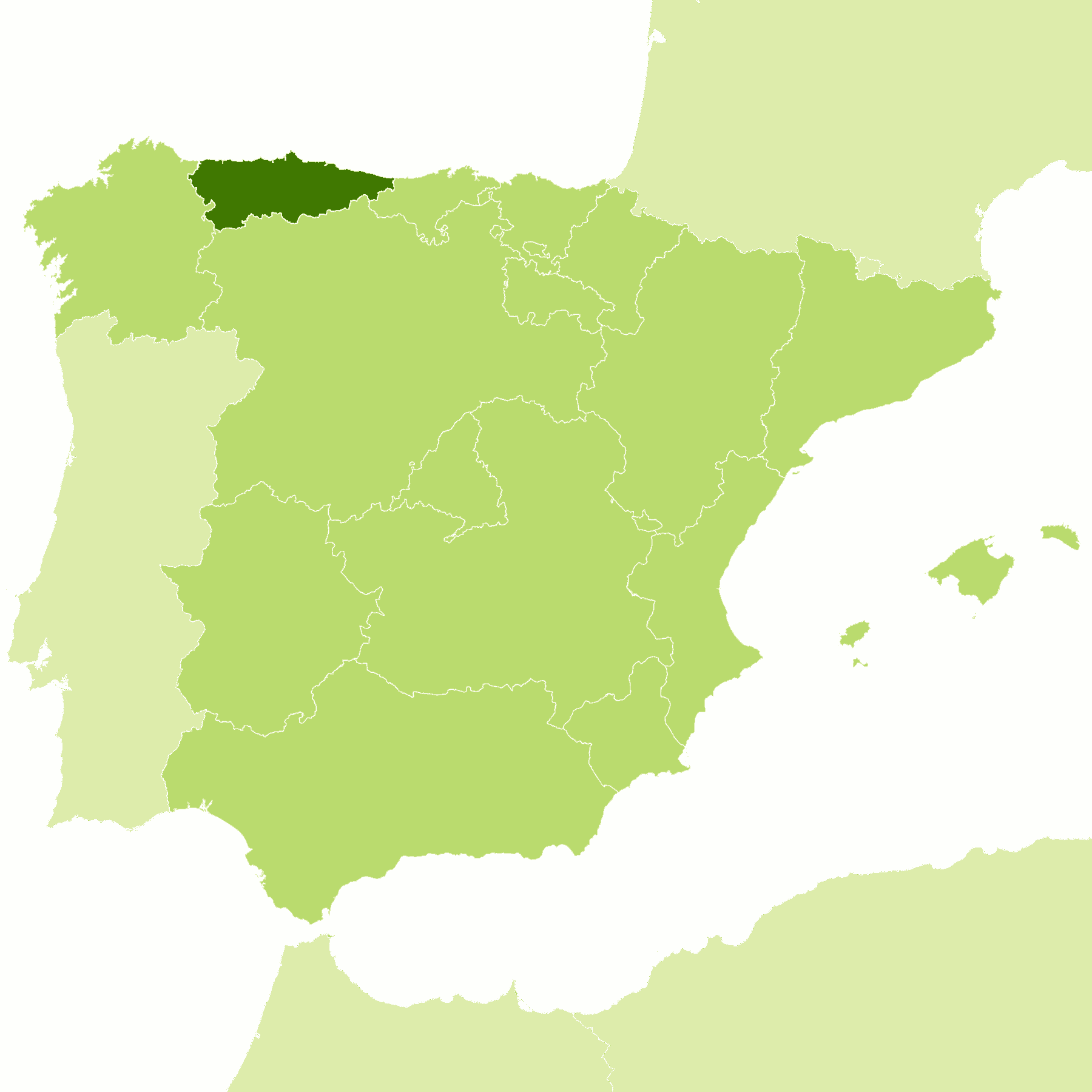
Come home to Paradise
| Location: | Northwest Spain |
| Coordinates: | 43° 15′ N, 06° 00′ W |
| Size: | • 85 km N-S; 220 km E-W • 55 miles N-S; 135 miles E-W |
| Terrain: | Northern slopes of the Cantabrian Mountains. Sheer cliffs line the coast, and a narrow strip of level moorland stretches inland to the foot of the mountains |
| Climate: | Maritime climate with abundant rainfall throughout the year and mild temperatures in both winter and summer. Winter snows in the mountains |
| Highest point: | Torre Cerredo 2,650 m / 8,690 ft |
| Forest: | 61% (2010 est.) (source) |
| Population: | 1,018,784 (2020) |
| Population density: | Low-to-Medium (96/km²) |
| Capital: | Oviedo |
| Languages: | Spanish, Asturian |
| Human Development Index: | Very High (0.900) |
